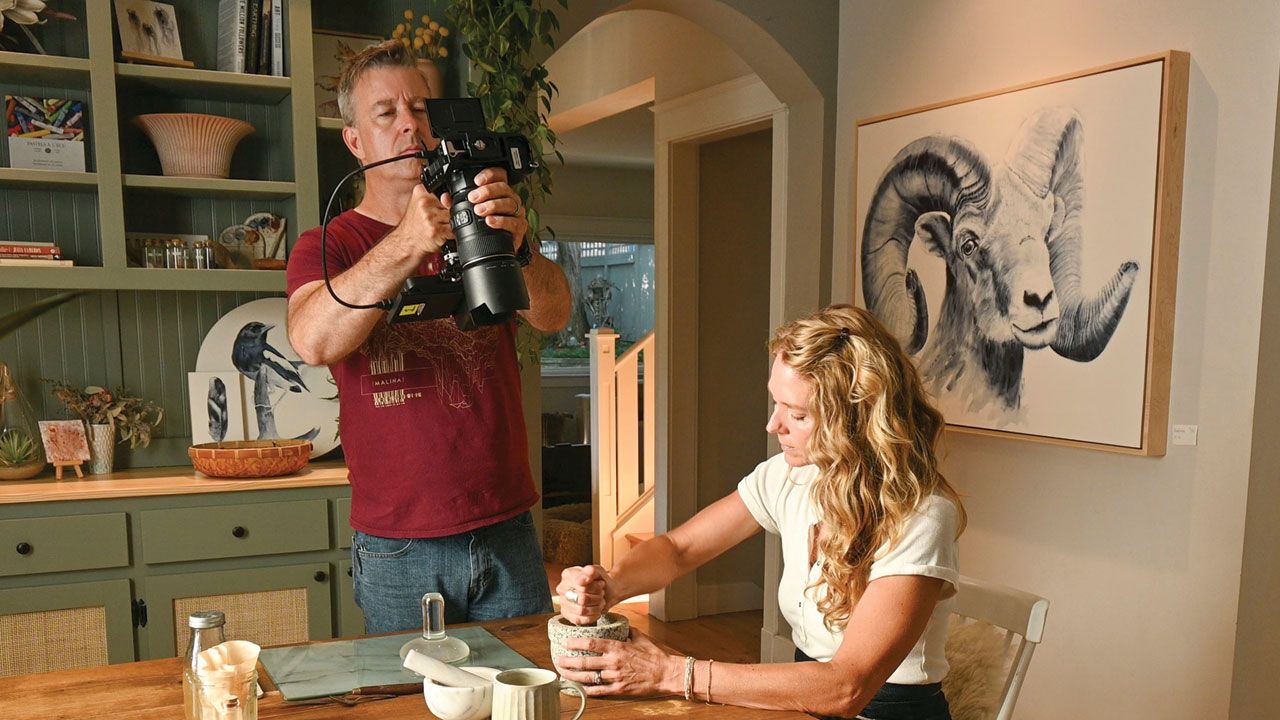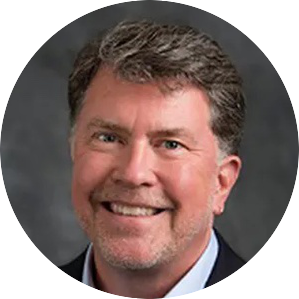Photographers blend art, tech, business

Everyone has access to a camera on a cell phone, and YouTube is the second largest search engine, yet photography and videography remain a form of fine art and a key marketing and promotional tool that requires skills and a dedication to the craft that can take years to develop.

“Video has become so prevalent in the era of YouTube. It’s something we have to be good at and have in our tool box,” said Doyle Albee, president and CEO of Comprise, a Boulder-based full-service communications company.
Comprise started out as a public relations firm that expanded to a content creation company employing video, website design and development, digital marketing, social media and trade show booths to market and increase its clients’ brand awareness, comprising “all the things that we think communication needs to be,” Albee said. “We really try to approach things so it’s not ‘what video do you need?’ but how does video play a role in your overall communication and marketing strategy?” Albee said.
SPONSORED CONTENT
The many benefits of simple, coordinated healthcare
Kaiser Permanente combines health care and coverage in one connected system to maximize employee health and minimize employer costs.
Comprise, he said, identifies the story that needs to be told and the best tools to do that for all of its clients — often, video is a way to get that story out quickly, increase search-engine optimization and add to website interactivity.
“When we do some video work, really it’s about how that video is going to move the story along,” said Jennifer Stevens, vice president of creative and digital for Comprise. “We look at what the big picture is going to be and how we can take the video … from long form that lives on a client’s website … and create snippets for use in other parts of their communications program, so is it being used on social? Are we using it in paid advertisements?”
Comprise collects video footage to provide clients multiple applications for finished pieces, consistent with its strategic focus to “extend the investment” in its core offerings, Albee said. The cost to produce video can be a challenge, however, though over the past several decades it’s been on the decline, he said. “Now, you can get far better quality for 1/45th of the price,” Albee said. “The other thing that’s come down is the cost of editing.”
Video equipment used to cost in the tens of thousands and now production can be done on a laptop or home computer, and the hardware, software and cameras are less expensive. Plus, the technology has improved, making the process easier and faster.
“While the software has become easier to use and dramatically less expensive, as well as the hardware, there still needs to be the human element … to bring that together and really tell that story,” Albee said.
There’s a level of skill to using a video camera and editing tools, following the design rules and knowing how to make video great, Stevens said. She’s worked in a variety of storytelling mediums, starting her career in print and moving into website and coding work. Now, she manages a team of audio, video and animator experts at Comprise, where she’s worked for the past 10 years.
“I like there’s a lot you can do with it,” Stevens said. “It’s fun, and it takes time. There are a lot of applications you can use video for, so it’s fun to think about how we could use it in the marketing we do or our clients.”
Jonathan Castner, owner of Jonathan Castner Filmmaker/Photographer, is a Denver-based commercial filmmaker and photographer who tells the human side of a business’s story. He primarily works in film, creating explainer videos, testimonials and other content, sometimes fleshing out his storytelling packages with print.
“What I do is I connect my clients to the people who want to hire them by crafting a narrative using a documentary feel, so it doesn’t feel like advertising, marketing or sales,” Castner said. “It feels like revelation, because I’m pulling them through an honest and accurate story that makes them understand. It makes them feel they are connected.”
Castner also makes sure the story he’s producing isn’t improvised but the one that’s intended as part of a marketing or branding campaign. His type of storytelling and the work he does is tough to sell, though, since there isn’t a widely accepted term for commercial photojournalists.
“The opportunity is that there are lots and lots of people who need me … they all have a story to tell,” Castner said. “My job is to produce a series of assets that go out primarily through digital marketing … to further amplify a connection to the client.”
Castner initially worked as a photojournalist for 30 years, including as a freelance photographer for BizWest. In 2018, he left journalism to go commercial after giving a presentation on small-budget commercial promotional videos, realizing he had the needed skills, after working in stills, multimedia and video. He now works primarily with business-to-business clients, only taking on ethical projects that don’t stoop to the emotional manipulation tactics that can be found in traditional advertising.
“I have to believe in the mission; otherwise, I’m not creating a story but propaganda,” Castner said. “I’m still telling stories, and I’m still being honest and accurate, but I’m doing it in an engaging way so people have a positive feeling about this organization.”
Joel Blocker is a photojournalist and professional photographer who likes to tell the editorial side of a story through his LaPorte-based business Joel Blocker Photography. He has done freelance photography for publications such as BizWest and the Coloradoan and is focusing on special events and private photography sessions.
“I get to be creative. I get to come up with my own thing — I follow a short list at the same time,” Blocker said. “I enjoy being behind a lens, and I love the people aspect. I get to know a lot of people in the community.”
When Blocker started out in photography in the late 1990s, he worked in black-and-white images and printed them using a darkroom; now, he uses photo share applications and has more range, since camera equipment has improved in the megapixels.
He also worked for a couple of publications in western Colorado before branching out on his own. “The challenges are pretty simple,” Blocker said. “It’s not a lot of steady work exactly. It’s not your typical 9-to-5 job. You really have to market yourself.”
The Center for Fine Art Photography, a big city art center founded in Fort Collins in 2004, takes a different approach to photography, focusing on themes for its local and international artist exhibitions, anything from the 100th anniversary of women’s suffrage to stories about everyday life in a mining town.
The exhibits — there are about six to 10 each year — are coupled with artist talks. The center also offers online programs and exhibitions, photo-based installations, live building projections, educational programs and supporter and artist memberships.
“It’s a channel for artists to show their interpretation of the world. They’re interpreting trends, themes, culture and world events,” said Hamidah Glasgow, executive director and curator for the Center for Fine Art Photography.
Photographers who do their work as an art form work differently than commercial photographers and videographers, building networking relationships and submitting proposals to be part of an exhibit or to present a solo venture.
“You need to hone your craft. You need to get really good at what you do and try a lot of different things, then you find your groove,” Glasgow said. “It’s an artistic skill. It’s a passion thing. It’s what keeps you curious. You need to know the craft and follow your creative instincts.”
Photography as a hobby or art is expensive, requiring an investment in equipment and software, just as it requires in the commercial realm.
“It’s difficult to make money doing it,” Glasgow said. “You really have to have a passion for it, a sense that this is something you really need to do. It’s honing your craft and finding ways to support that passion.”
Everyone has access to a camera on a cell phone, and YouTube is the second largest search engine, yet photography and videography remain a form of fine art and a key marketing and promotional tool that requires skills and a dedication to the craft that can take years to develop.

“Video has become so prevalent in the era of YouTube. It’s something we have to be good at and have in our tool box,” said Doyle Albee, president and CEO of Comprise, a Boulder-based full-service communications company.
Comprise started out as a…
THIS ARTICLE IS FOR SUBSCRIBERS ONLY
Continue reading for less than $3 per week!
Get a month of award-winning local business news, trends and insights
Access award-winning content today!

